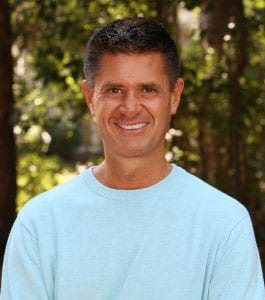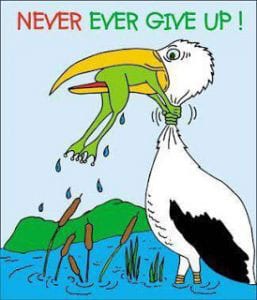When the pain and muscles contractions from my dystonia were at their worst for me (see above), it significantly limited what I could do.
For years I characterized dystonia and chronic pain as evil intruders that ruined my life. What I could no longer do was my only focus, which caused great anger and depression.
I was so bitter that I let myself become a victim. I was lost in a world of pain; a world I felt was out to get me.
Feeling like a victim is normal when diagnosed with any serious health condition, but it is not not just people with a health condition that play the victim role. People who look negatively on life’s circumstances complain about everything from the weather, other people, their jobs… the list is endless.
We have all done it, which is fine, but it is self-destructive if we remain in this state of mind. We become isolated, depressed, bitter, angry, and resentful. We mainly complain and rarely look for solutions to problems. To the victim, everything is always someone else’s fault. Nothing makes us happy and the things that do only last for very short moments, and then we go back to the unsatisfied, unhappy reality we have created.
For the first several years with dystonia, this is exactly how I felt. I was miserable. I felt a deep sense of loss and was extremely frustrated, so I had a lot of negative self-talk. My anger and sadness made my dystonia worse because negative emotions cause increased muscle tension. I had to shift my thinking and focus on moving forward if I wanted to live a happier and healthier life.
I had to get out of the “why me, poor me?” frame of mind if I wanted freedom from my mental anguish. Instead of asking, “why me?” I began asking, “why not me?”, “how can I learn to live with chronic pain?”, and “how can dystonia help me learn and grow?” I am no better or worse than anyone else so if it happened to me, so be it. Maybe there was good reason for it. “Start viewing it this way”, I told myself.
Plus, there was nothing I could do to reverse things so I needed to learn to accept it and find the lessons in it, even when I was in ridiculous pain and could barely function. Easier said than done, but awareness of this attitude is a start!
I try very hard not to, but I still find myself being a victim at times, so I am not immune to any of this whatsoever. I just work much harder now to be mindful of these tendencies. When things get tough, I do my best to tell myself, “although this is a difficult situation, I am going to make the very best of it.” This shifts my focus to one that is solution oriented which always puts me in a better frame of mind.

Share Tom’s dystonia story today.



